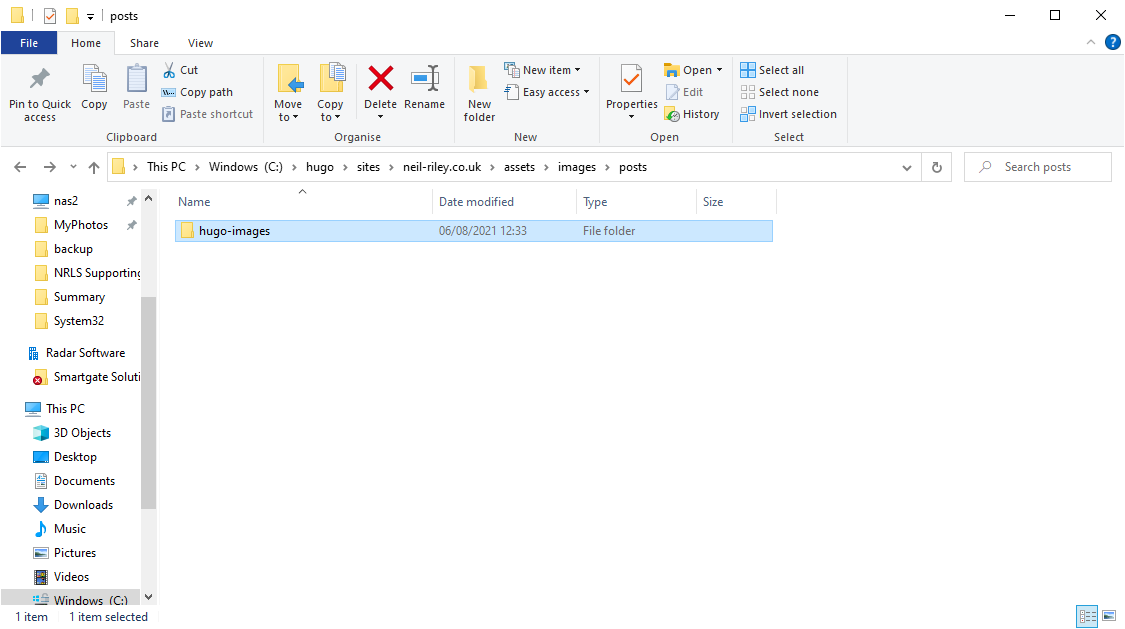Posts
Hugo GIT
Source Control (GIT) Initialise This step is how to add our site to source control. This allows the site to be deployed, as well as maintaining source control so that we have a copy of the site at a point in time, and can restore back to that in case of any issues.
This assumes that git and GitHub desktop have been installed. You will also need a github account.
Posts
Hugo Images
How to handle image in pages After spending a lot of time being confused about how to handle images, this is what i do
Create following directory structure in root: content\images\posts Create a new directory in above for a particular posts Copy image in to above directory Make sure file is small… In post reference image: 
Posts
Hugo New Page
How to get a new page This step is how to add a new post within hugo. It will let us actually start adding some content to the site that we are building.
Open a window command prompt In the command prompt type:
cd c:/hugo/sites/example.com
This will change the current directory to c:\hugo\sites\example.com. This is the location that we set up earlier to contain the details of the site that we are creating.
Posts
Hugo Choose a theme
Choose a theme (simple) you can download the archive of the latest version of this theme from: https://github.com/theNewDynamic/gohugo-theme-ananke/archive/master.zip Extract that .zip file to get a “gohugo-theme-ananke-master” directory. Rename that directory to “ananke”, and move it into the “themes/” directory. Change config.toml to add theme = “ananke” Choose a theme (if git installed) Go to https://themes.gohugo.io/ Choose a theme Chose “download” on theme In your Hugo site themes directory, run: “git clone https://github.
Posts
Hugo Server
Run Hugo Server This step is how to run hugo with the minimum of configuration. It will let us actually see the site that we are building and we can then make changes to make it look and feel how we want it to.
Open a window command prompt In the command prompt type:
cd c:/hugo/sites/example.com
This will change the current directory to c:\hugo\sites\example.com. This is the location that we set up earlier to contain the details of the site that we are creating.
Posts
Hugo New Site
New site This step is how to create a new site with hugo. It will have nothing in it at the moment, but will be the basis for where we enter content and styling going forwards.
Open a window command prompt In the command prompt type:
cd c:\hugo\sites
This will change the current directory to c:\hugo\sites. This is the location that we set up earlier to store the sites that we are creating.
Posts
Hugo Installation
How to install Hugo Go to https://github.com/gohugoio/hugo/releases Download the asset EXTENDED (e.g. hugo_extended_0.86.0_Windows-64bit.zip) Unzip the download Copy the contents of the extracted directory to C:\hugo\bin (recommented to store executable files here) Create another subfolder in Hugo: C:\Hugo\Sites Set up hugo as an alias Right click on the Start button. Click on System. Click on Advanced System Settings on the left. Click on the Environment Variables… button on the bottom. In the User variables section, find the row that starts with PATH (PATH will be all caps).
Posts
Hugo Introduction
Hugo Hugo is a simple, boring, cheap and fast blogging engine.
It is simple in that there is not much to learn. You just write your content in markdown.
It is boring in that you don’t have to worry about then engine itself. You can just concentrate on making content, and let hugo worry about making it render.
It is cheap in that Hugo is free, open source software. On top of this, a Hugo site can be hosted on the web for free.